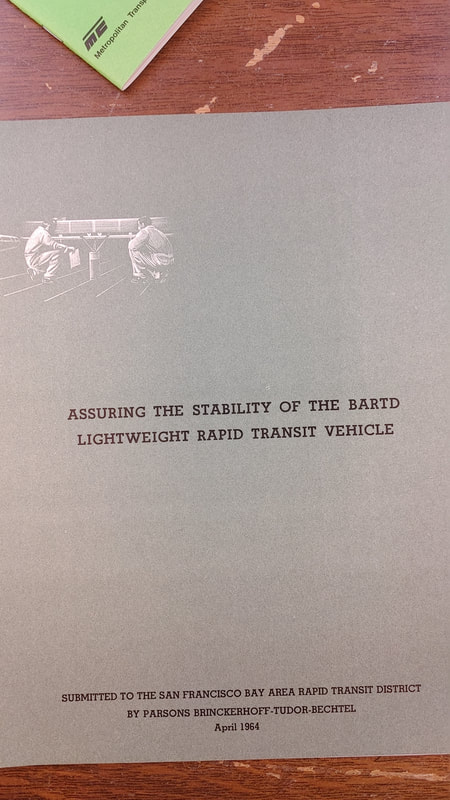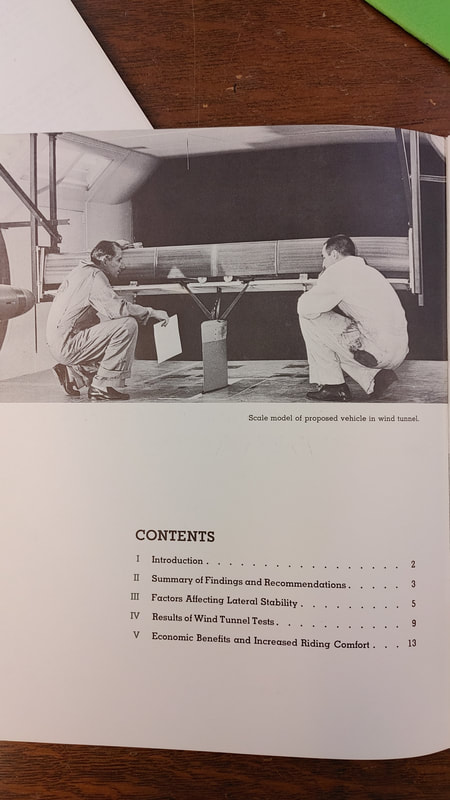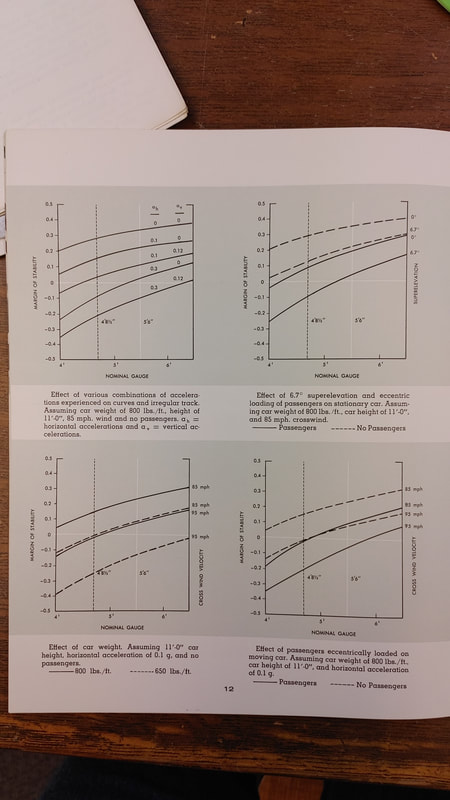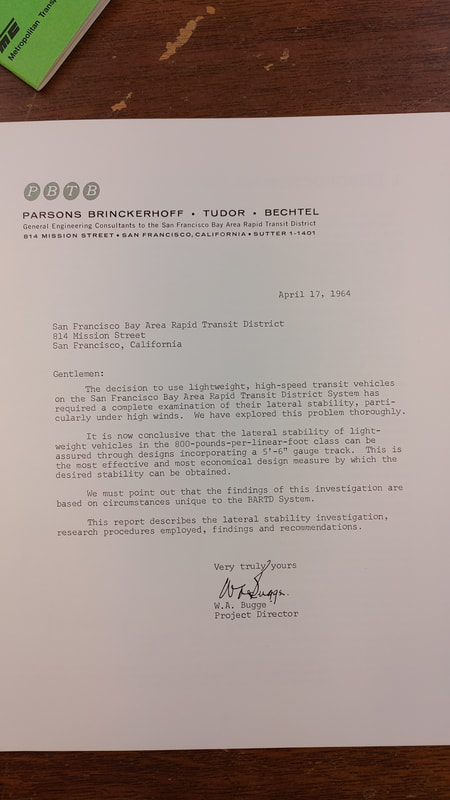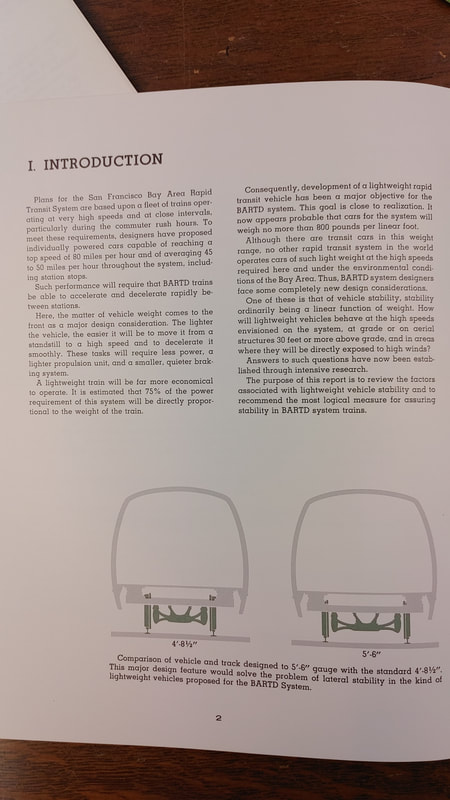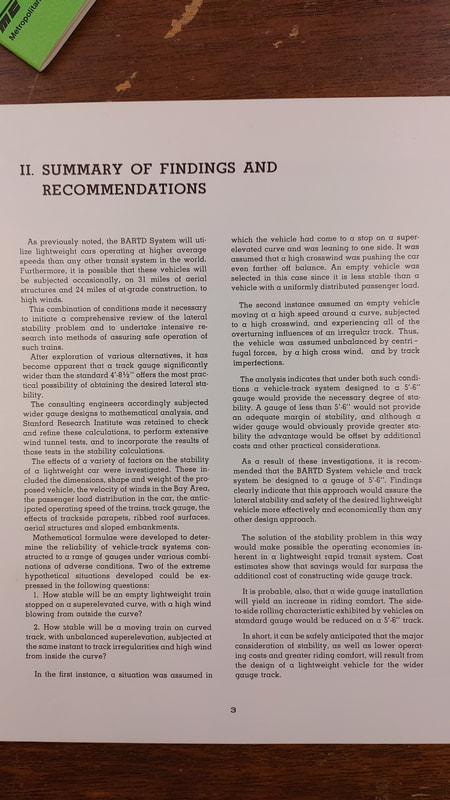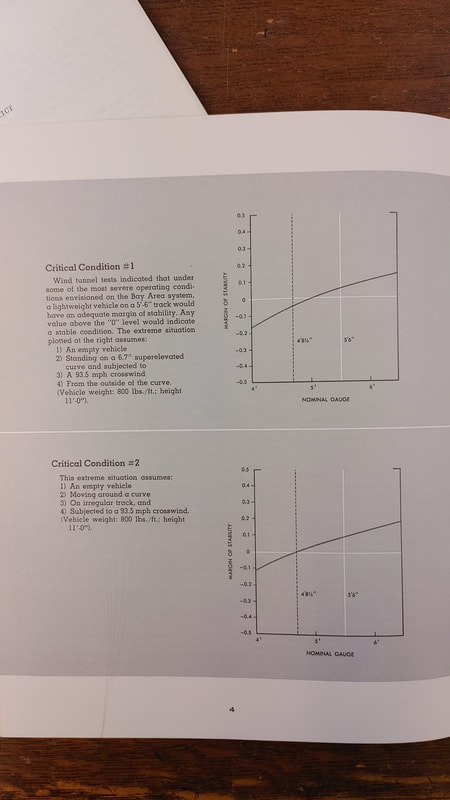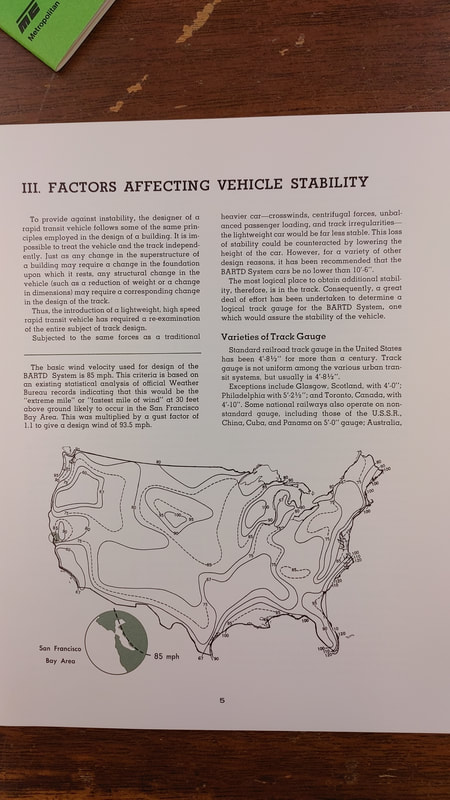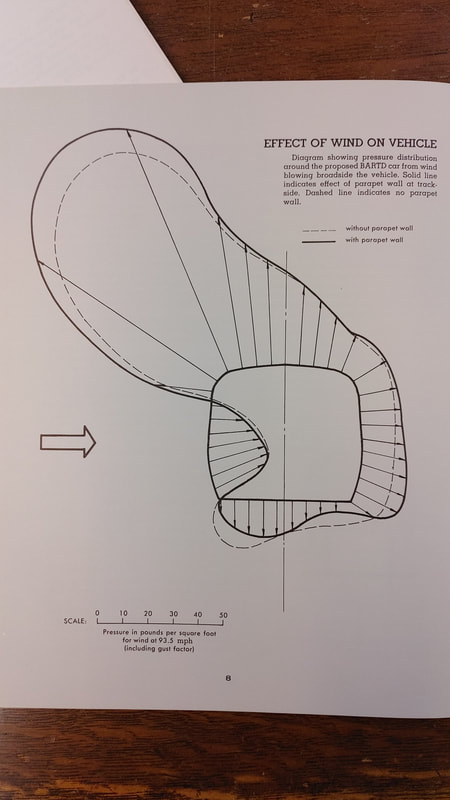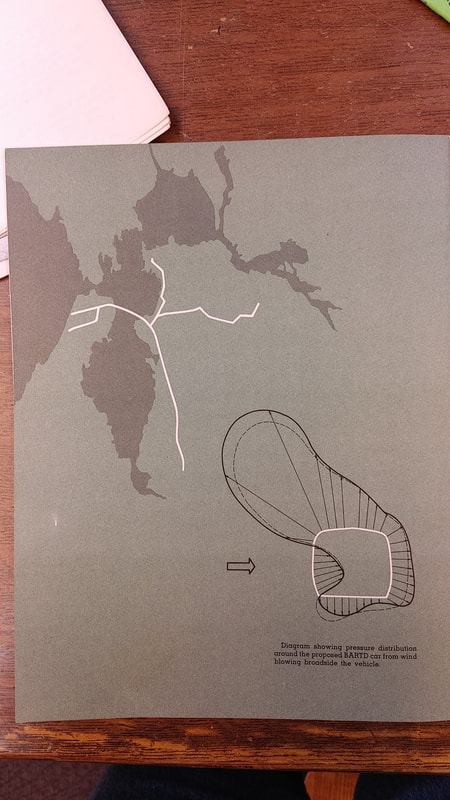Why is BART wide gauge?
Perhaps the most frequently asked question on BART. BART was designed as a clean-sheet system, to take full advantage of the then-recent space-age developments in technology. An aerospace mindset was used when designing the system, to provide Bay Area residents the most advanced railroad ever built. This clean-sheet design also included an evaluation on the weight of cars and track gauge.
As per the PBTB April 1964 report "Assuring the Stability of the BARTD Rapid Transit Vehicle", wide gauge was chosen to ensure lateral stability and safety of the lightweight cars (~800 lb/ linear ft) while exposed to high wind conditions on superelevated curves. A standard gauge, empty car standing on a superelevated curve with high crosswind would not have an adequate margin of stability. The same report also noted that this wide gauge would support the effort to build lightweight cars, which in turn, "would make possible the operating economies inherent in a lightweight rapid transit system" plus an increase in riding comfort.
The gauge chosen was shown to be the maximum gauge permitted without an exponential increase in construction costs.
Source: Parsons Brinckerhoff-Tudor-Bechtel, "Assuring the Stability of the BARTD Rapid Transit Vehicle" April 1964. Robert Townley Collection, Western Railway Museum archives.
As per the PBTB April 1964 report "Assuring the Stability of the BARTD Rapid Transit Vehicle", wide gauge was chosen to ensure lateral stability and safety of the lightweight cars (~800 lb/ linear ft) while exposed to high wind conditions on superelevated curves. A standard gauge, empty car standing on a superelevated curve with high crosswind would not have an adequate margin of stability. The same report also noted that this wide gauge would support the effort to build lightweight cars, which in turn, "would make possible the operating economies inherent in a lightweight rapid transit system" plus an increase in riding comfort.
The gauge chosen was shown to be the maximum gauge permitted without an exponential increase in construction costs.
Source: Parsons Brinckerhoff-Tudor-Bechtel, "Assuring the Stability of the BARTD Rapid Transit Vehicle" April 1964. Robert Townley Collection, Western Railway Museum archives.
Wide gauge is not the ONLY reason why BART tracks cannot host Amtrak, ACE, Caltrain, freight, etc, rail traffic.
See more on the "design" page.

